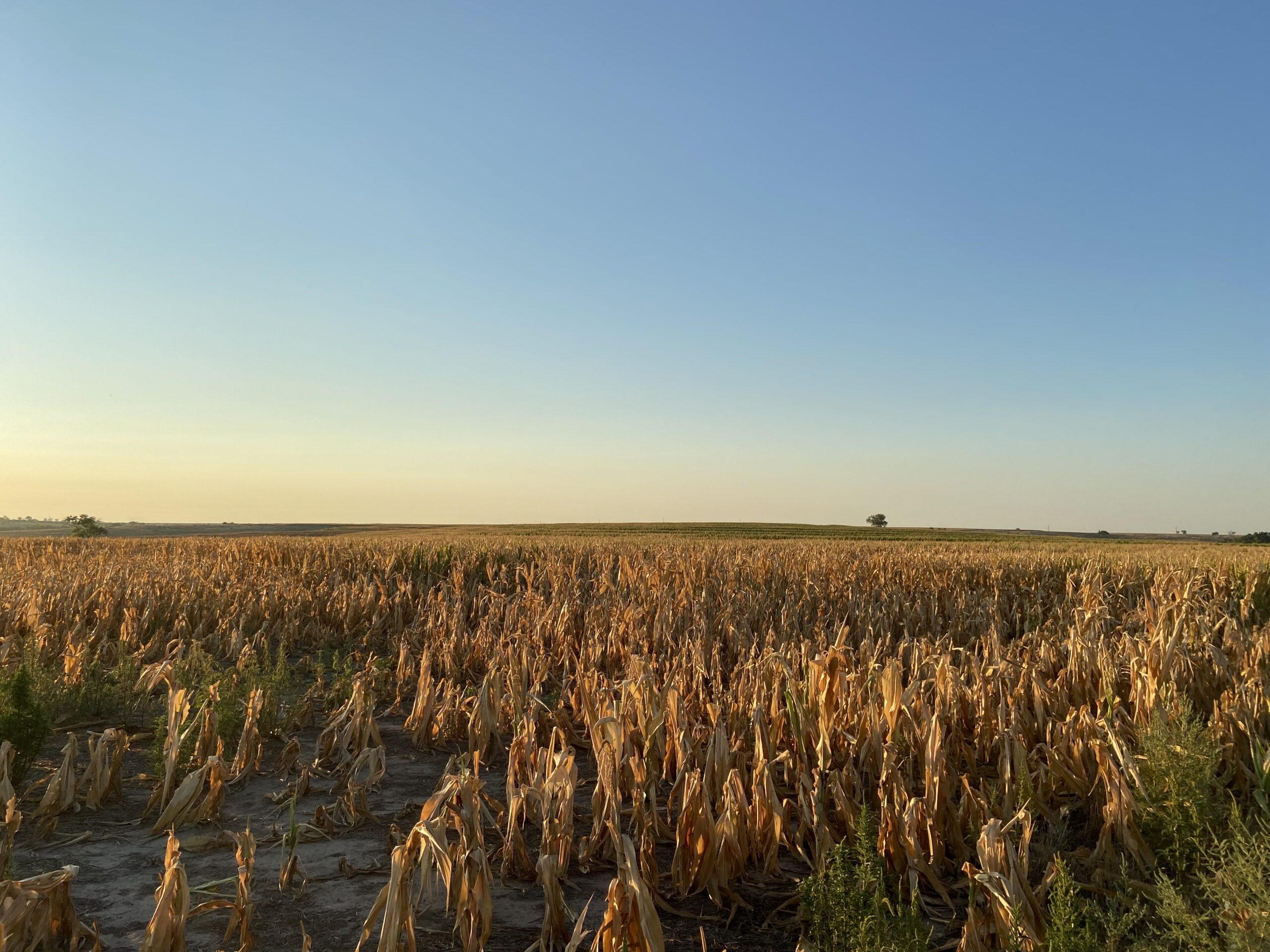Regional- Significant Events for June – August 2022

Highlights for the Basin
Rapid snowmelt caused by rain led to record flooding in Montana and parts of Yellowstone National Park from June 11th to 14th. Severe damage was inflicted to infrastructure after flows were nearly 192% of the previous record.
The drought-afflicted tri-state area (CO, KS, NE) and central Nebraska were arid in August, with near-record dryness across numerous locations. Nebraska and Kansas ranked 2nd and 7th driest for the month.
August was scorchingly hot in the northwestern part of the Basin after a prolonged heatwave impacted the area. Montana and Wyoming ranked 3rd and 6th warmest after departures of 8-10 degrees across both states in August.
Regional- Climate Overview for June – August 2022
Temperature and Precipitation Anomalies
Temperatures were above-normal for the majority of the Missouri River Basin, with the greatest departures in the western parts of Kansas and Nebraska. Temperatures in June and July were both above-normal throughout the region.
Numerous locations in the western portions of the basin observed their top five warmest summers, with only 2012 being hotter in some places.
Precipitation was above-normal in Colorado and parts of Wyoming due to the southwest monsoon, while other isolated pockets of near-normal precipitation were present in the basin. Much of Kansas and Nebraska were well below normal, resulting in the intensification of drought conditions in those states.
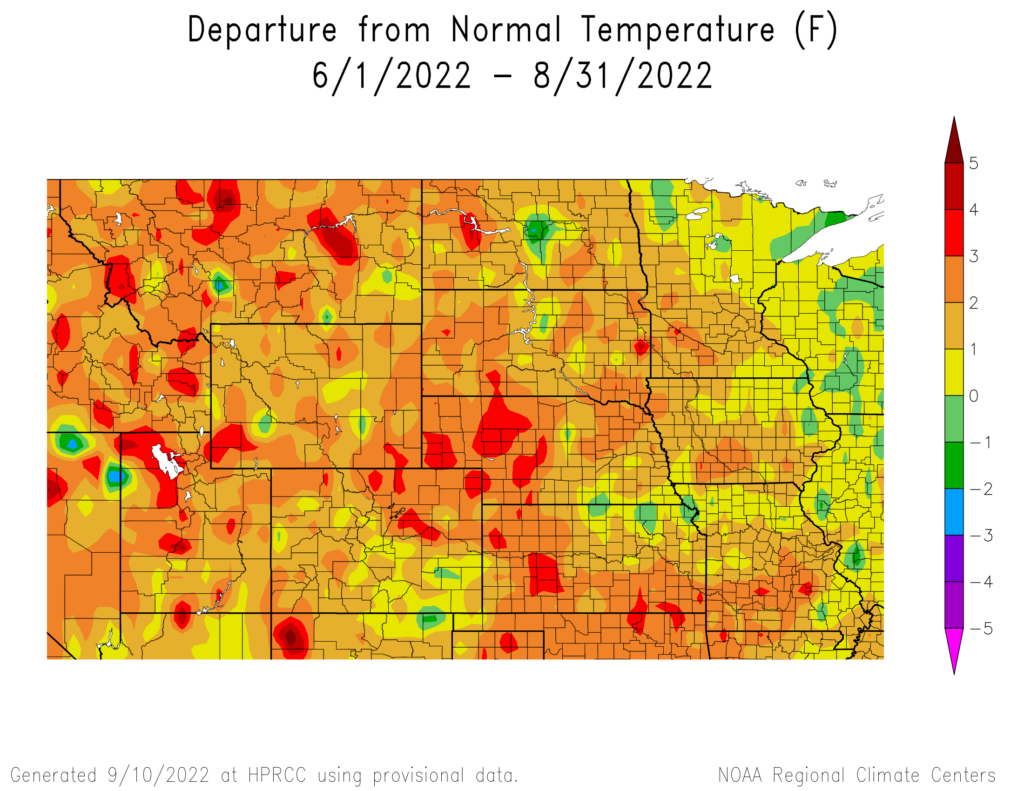
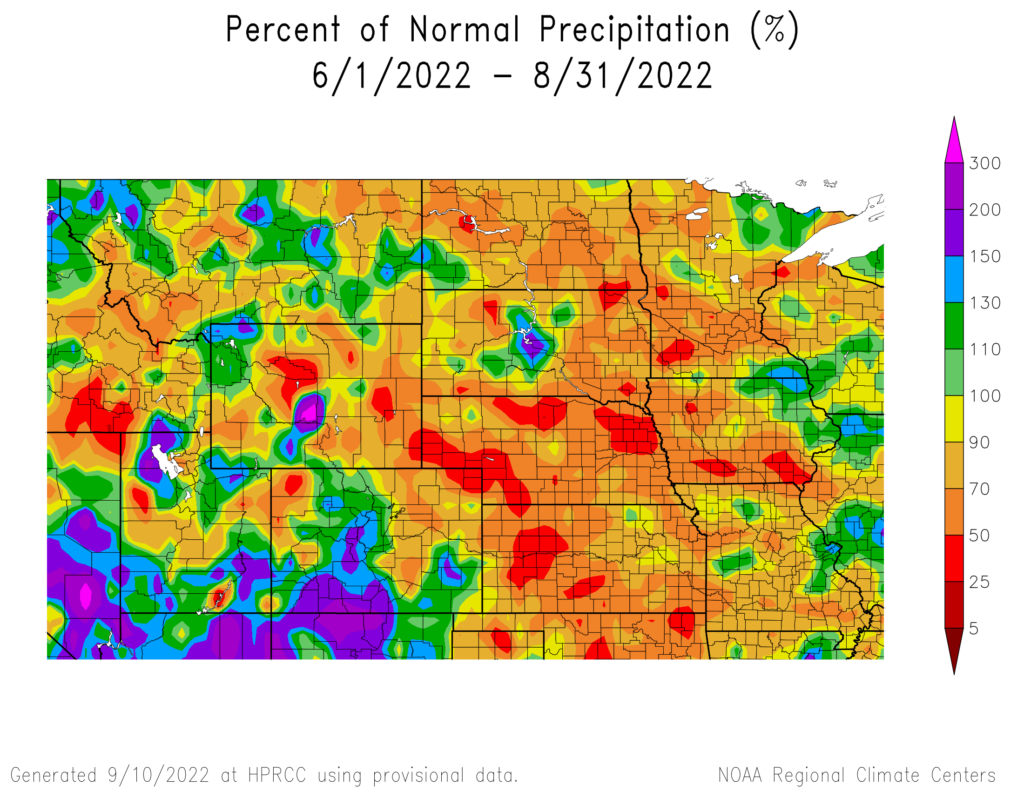
and Percent of Normal Precipitation (bottom) for Winter 21-22
Changes in Drought Conditions
Drought conditions improved across Montana, western South Dakota, and northern Wyoming this summer, while persisting and degrading in Kansas and Nebraska. According to the Drought Monitor, exceptional drought (D4) encompasses over 10 percent of both states. The map above shows the areas of increasing and decreasing categories of drought.
June 7 – September 6, 2022
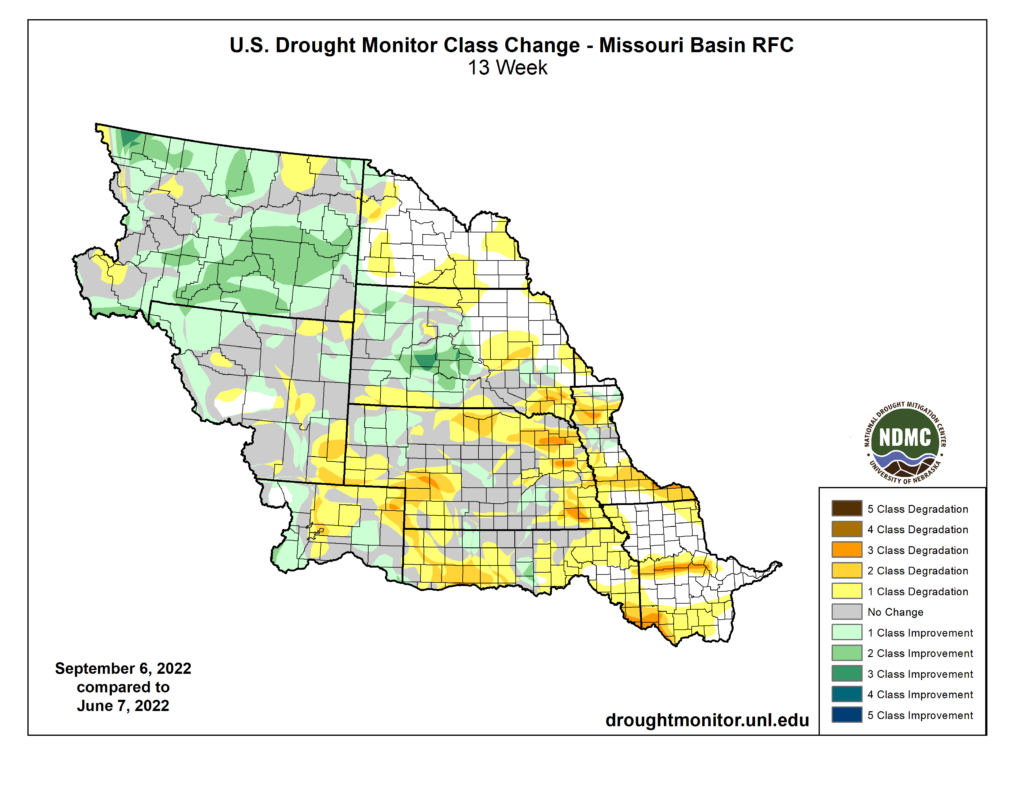
Regional- Impacts for June – August 2022
Agriculture
Agriculture in Colorado, Kansas, and Nebraska was severely impacted by drought this summer, with low to little yields expected in some areas. Many farmers have filed for crop insurance due to poor yields or chopped fields for silage. As of September 1st, sorghum yields in Kansas are projected to be 45 bushels per acre, down from 78 in 2021. Pasture conditions are in very poor shape, which has led to the culling of cattle herds. A heatwave in June led to numerous cattle deaths in southwestern Kansas, with thousands of cattle reported to have perished. Dryness in Montana and the Dakotas has led to grasshopper infestations across those states, impacting crops and pastures.


Water Resources
Drought has taken its toll, with water resources stressed across the region. According to the United States Army Corps of Engineers, winter releases from Gavins Point Dam will be at minimum rates (12,000 cubic feet per second) to conserve water. Runoff improved slightly over the summer; however, it was not enough to overcome the persistent drought. Due to dryness and irrigation demand, the Platte River is dry in much of central and western Nebraska for the first time since 2012. The Sherman and Calamus irrigation reservoirs in central Nebraska have reached such low water levels that boat ramps are being closed.
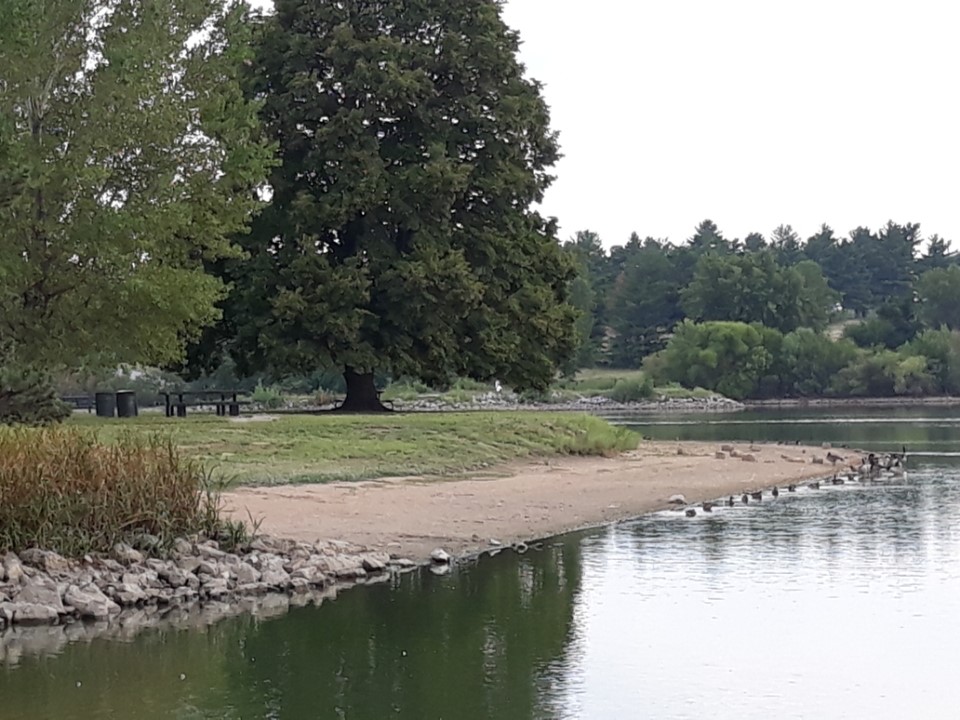
Regional- Outlook for October – December 2022
According to NOAA’s Climate Prediction Center, the outlook for the upcoming season indicates increased chances of above-normal temperatures across much of the Missouri River Basin. Equal chances of above, below, and near-normal temperatures are favored in Montana and the Dakotas. Increased chances of below-normal precipitation are present throughout the lower basin, while above-normal precipitation is slightly favored for western Montana.
La Nina influences will continue through fall. Based on the outlooks, drought will continue across the basin. Drought development is likely across much of Colorado, eastern Kansas, and northwestern Nebraska.
Temperature
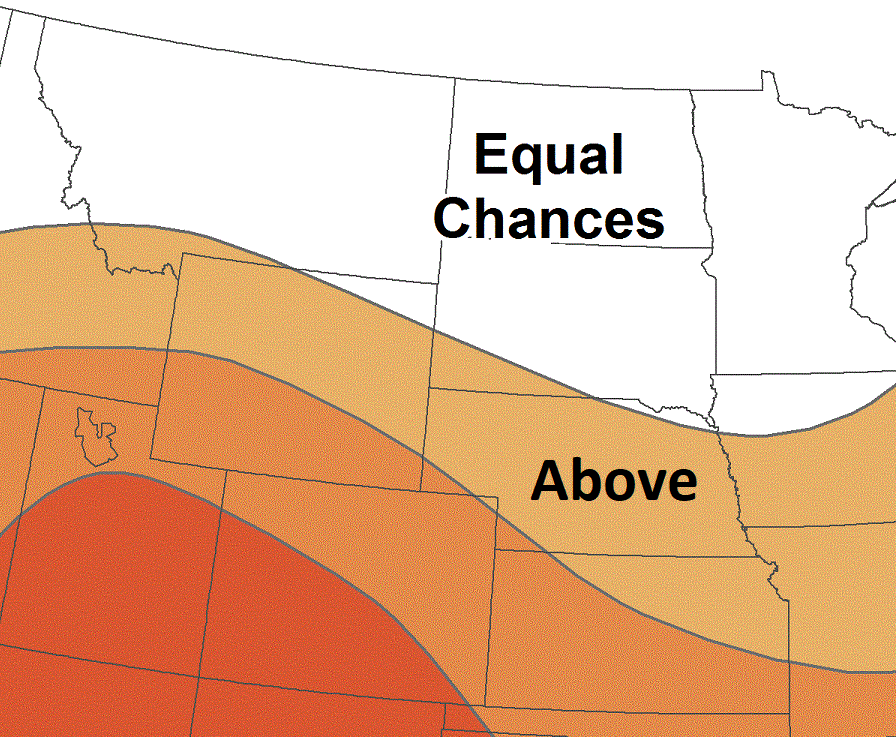
A: Above normal, B: Below normal
Precipitation
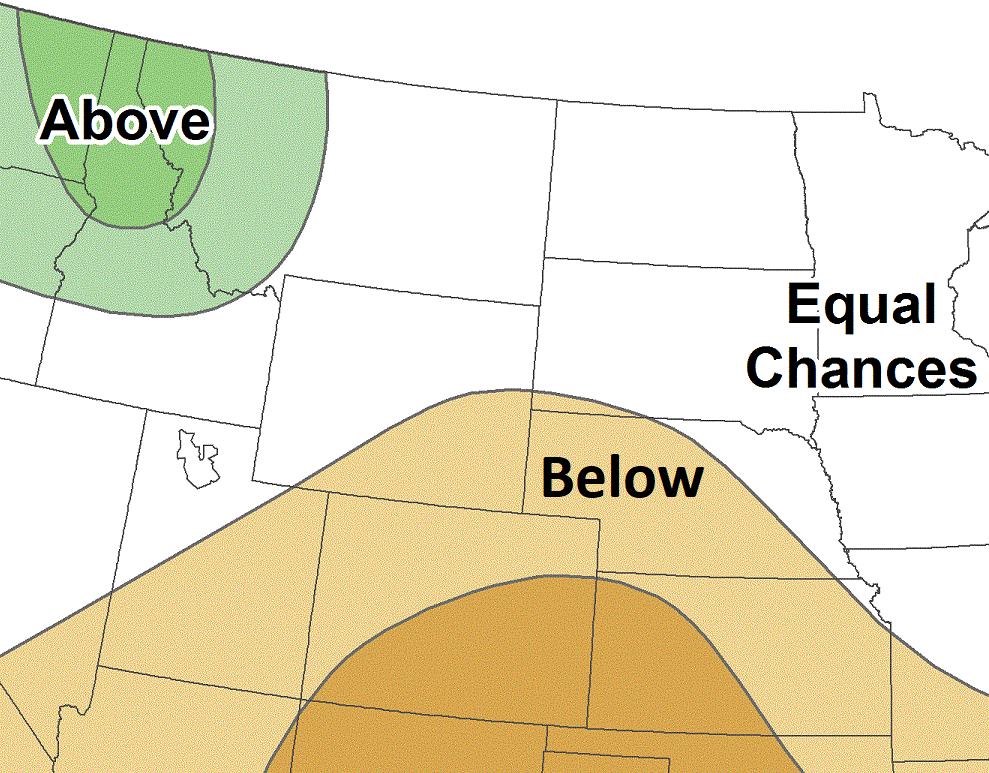
A: Above normal, B: Below normal
MO River Basin Partners
High Plains Regional Climate Center
www.hprcc.unl.edu
National Integrated Drought Information System
https://www.drought.gov/
NOAA NCEI
www.ncdc.noaa.gov
NOAA NWS – Central Region
www.weather.gov/crh
NOAA NWS Climate Prediction Center
www.cpc.ncep.noaa.gov
NOAA NWS Missouri Basin River Forecast Center
www.weather.gov/mbrfc
American Association of State Climatologists
https://www.stateclimate.org/
U.S. Army Corps of Engineers
www.nwd-mr.usace.army.mil/rcc/
U.S. Bureau of Reclamation
https://www.usbr.gov/
USDA Natural Resources Conservation Service
www.nrcs.usda.gov
USDA Northern Plains Climate Hub
www.climatehubs.oce.usda.gov
Bureau of Indian Affairs – Great Plains Region
www.bia.gov/regional-offices/great-plains
National Drought Mitigation Center
http://drought.unl.edu/
Download PDF below


